
Original Link: https://www.anandtech.com/show/1291
Weekly Buyer's Guide: Overclocking System - April 2004
by Evan Lieb on April 8, 2004 10:47 AM EST- Posted in
- Guides
Index
Today, we release our eighth Buyer's Guide in the past 8 weeks. You can look forward to Buyer's Guides in the middle of every week, and then, after the end of each month, we will retool our guides to reflect the new hardware and pricing of that particular time period. Today, we are continuing the refresh of our Buyer's Guides to see what has changed, if anything, in the past 4 weeks. In case you haven't read our new Buyer's Guides yet, here's the basic format of them to be released on a weekly basis:Week 1: Entry Level System
Week 2: Mid-Range System
Week 3: High End System
Week 4: Overclocking System
For every component that goes into a computer, we offer our recommendation for a piece of hardware as well as our alternative on that type of hardware. We've added alternative hardware picks to our guides because it allows AnandTech to recommend a wider variety of hardware (especially for those willing to spend a little more than what we budget for a particular system). Alternative picks tell you just that - your alternatives, which in some cases will be better suited for your needs, and in other cases, will not be. But at the same time, we can still be assertive enough with a first place recommendation so that new buyers aren't indecisive or confused about what to purchase. Most of the prices listed for the hardware that we recommend can be found in our very own RealTime Pricing Engine. Any prices not found in our engine can be found on pricewatch.com. We list pertinent parts of our RealTime pricing engine at the bottom of every page of our Buyer's Guides so that you can choose the lowest prices from a large variety of vendors all by yourself.
We are always taking suggestions on how to improve our Buyer's Guides. If you feel that we are not including a wide enough variety of systems in our guides, please let us know and we can see if it warrants an additional weekly Buyer's Guide.
Overclocking
What we're going to tell you here are probably things that you already know. For example, if you're considering overclocking, you're probably someone who has at least an interest in computer technology and most likely, someone who just wants to squeeze as much performance as possible from their system without spending big bucks. If you're considering overclocking, you probably also know that overclocking hardware is never guaranteed; sometimes you'll receive components that overclock through the roof and sometimes you'll receive a dud. What you should know and keep in mind is that overclocking can damage your hardware and your data, and usually isn't covered under warranty, often times voiding warranties. Also keep in mind that this isn't an overclocking system meant for people who have cash to burn, so you're not going to see elaborate water cooling setups or ridiculous liquid nitro cooling solutions; our overclocking systems are cooled by air (fans). Granted, we're recommending the best air cooling available.Keeping that information in mind, our overclocking systems always put stability before performance. While that may sound contradictory, knowing that the whole point of overclocking is to basically gain more performance from your system, a high performance system is nothing if it's unreliable and crash happy. Therefore, with stability first and performance a very close second, price is a more distant consideration. Remember, though, that price is still important enough that this is not meant to be a high end system, even though it'll perform better than one. For more information on our picks for high end components, take a look at last week's High End Buyer's Guide.
CPU and Motherboard Recommendations
CPU: AMD Athlon XP 2500+ Mobile Barton (512K L2 cache)Motherboard: ABIT NF7-S Revision 2.0 (nForce2 Ultra 400)
Price: CPU - $92 shipped (OEM). Motherboard - $98 shipped

In the last month, not a whole lot has changed on the AMD overclocking front. Athlon XP processors are still the choice of AMD overclockers for the most part. Recently, however, there are those who have been experimenting with Athlon 64 (2800+) overclocking. Specifically, with motherboards like the AOpen AK86-L or MSI K8T Neo, with great results. We've done some testing and looked at the results, and while impressive, it's still not good enough for serious overclocking enthusiasts. Athlon 64 overclocking is tempting and certainly worth tinkering with if you can find the time, but not quite worth your money yet.
Anyway, operating at 1.45V instead of 1.65V, and with other electrical layout changes, the mobile 2500+ has quickly become a favorite among AMD overclockers. A key feature of the mobile 2500+ is the fact that it comes factory unlocked, meaning its multiplier is adjustable from (in this case) 11X up to 22 and as low as 5X. This is vitally important to overclockers because this allows them to squeeze out more performance from their chip without having to resort to fantastic FSB speeds. Being multiplier unlocked is an important feature of the mobile 2500+, not only because it gives overclockers more performance, but because the regular (desktop) version of AMD's 2500+ processor is now coming factory locked, and that means that your motherboard has to sustain much higher FSB speeds than an unlocked CPU like the mobile 2500+.
Last month, we purchased a mobile Athlon XP 2500+ processor from a local vendor and tested it ourselves to see what we could ring out of it. We set the mobile 2500+ to 1.65V instead of leaving it at the default 1.45V, primarily because most Athlon XP processors' Vcore default is at 1.65V anyway. On just 1.65V, we were able to get a 2.38GHz core clock speed. This was stable during Prime95 and SPECviewperf 7.1.1 runs (8 hours), both of which, by the way, are good programs to test the stability of your system. Anyway, this is simply a great overclock, especially on 1.65V. Remember, the mobile 2500+'s stock speed is 1.87GHz (not 1.83GHz, like the desktop version), meaning that we were able to achieve a 510MHz total overclock. Moving on, we decided to head straight to the highest Vcore at which we would run a chip like this: 1.80V. At 1.80V, we were able to get a stable 2.52GHz overclock. In other words, with an additional 0.15V, we pumped out another 150MHz of speed. Knowing that most overclockers are frequent upgraders who usually don't use a CPU for more than 9 months (sometimes much less), 1.80V will be OK with the proper cooling and maintenance. We suggest a lower Vcore (like 1.75V or 1.775V) if your working environment happens to be significantly hotter than room temperature, as your CPU may overheat under load in a poorly ventilated room. Granted, as you'll see at the end of this guide, we chose powerful enough cooling that basically prevents this from ever happening.
Anyway, when you overvolt your CPU, you normally should be wary of how much you overvolt. For example, running your Athlon XP CPU at 2.0V or higher is simply not a good idea by any stretch of the imagination if you plan on keeping your CPU more than a month or two. It will die at that high of a voltage; we've seen it happen before and have had countless reliable reports of such failings. However, with the right mix of overvolting (1.75V-1.80V), your CPU should last as long as you're going to keep it, which is usually 9 months or less (by the time the better overclocking chips come around, in other words). However, we should note that not all mobile 2500+ processors will be guaranteed to reach the overclock that we experienced. 2.52GHz is simply not going to be possible for everyone. However, look at the bright side - you could get a chip that overclocks higher than 2.52GHz, and that would be a steal.
In case you're wondering, our mobile 2500+ is an IQYFA 0343 stepping processor. If you receive a different-week mobile 2500+, don't panic; we've seen reports of overclocks similar to ours with non-IQYFA chips, such as IQYHA chips and others.

Seeing that we're recommending the ABIT NF7-S Rev. 2 today, you would be correct to infer that we used this motherboard to achieve the 2.52GHz overclock with our mobile 2500+ processor. The NF7-S includes features like SATA RAID, SPDIF, and sound via the nForce2's APU, using the MCP-T South Bridge. Overall, the NF7-S provides a very nice package for just $98. The addition of four mounting holes for more powerful HSFs is an absolute necessity for AMD overclockers and is greatly appreciated. Combined with the mobile 2500+ processor, this motherboard will make a great foundation for your overclocking rig. Make sure you check out ABIT's user forums for more detailed information regarding daily BIOS and driver updates available to your NF7-S Rev. 2, in addition to any other information that you may need to tweak and overclock your system better. Online forums can be a very useful tool to maintaining your overclocked system over time and is highly recommended if you're a serious overclocker. Then again, there probably aren't very many overclocking enthusiasts who haven't visited an online forum, so forgive us if we're being a little too elementary.
Anyway, another nice little thing that the NF7-S Rev.2 does is allow full access to CPU multipliers 5X-22X. While full access is sometimes completely unnecessary, it's nice to have, and basically shows that ABIT has made a motherboard, in part, to serve the overclocker's needs. Thankfully, ABIT allows Vcore tuning up to 1.90V (and higher, but that's unnecessary) on the NF7-S Rev.2, in addition to plenty of VDIMM and FSB adjustments. This is all necessary on an overclocker's motherboard like the NF7-S Rev.2, so we see it as no surprise.
Listed below is part of our RealTime pricing engine, which lists the lowest prices available on the AMD CPUs and motherboards from many different reputable vendors:
If you cannot find the lowest prices on the products that we've recommended on this page, it's because we don't list some of them in our RealTime pricing engine. Until we do, we suggest that you do an independent search online at the various vendors' web sites. Just pick and choose where you want to buy your products by looking for a vendor located under the "Vendor" heading.
CPU and Motherboard Alternatives
CPU: Intel Pentium 4 2.8C 800MHz FSB Northwood (512K L2 cache)Motherboard: ASUS P4C800-E Deluxe (875P chipset)
Price: CPU - $184 shipped (OEM). Motherboard - $179 shipped

Like the AMD overclocking scene, the Intel overclocking scene was at a standstill for several months after the 2.4C was released. Just as it was last month, most enthusiasts today still consider the 2.8C to be the Intel overclocker's CPU of choice. The 2.8C, like the 2.4C, runs at 800MHz FSB, but the primary difference is the 2.8C's multiplier - 14X instead of 12X with the 2.4C. Unlike a lot of AMD processors, all Intel processors come factory locked. It's an unfortunate, but true, reality for overclockers. Nonetheless, Intel overclocking is most definitely a viable solution for overclockers these days, especially due to the superb additional performance you get versus an overclocked Athlon XP system.
As usual, we have some testing to share as well. First off, we decided to try out our luck with the 2.8C's default Vcore of 1.525V. At this voltage, we were able to achieve a stable overclock of 3.39GHz. Clearly though, more than 1.525V was needed, so we cranked up the voltage to what is probably the highest Vcore with which you want to experiment using a Pentium 4 processor: 1.65V (1.70V might be OK). At 1.65V, our 2.8C reached 3.59GHz, or an additional 200MHz bump in clock speed as a result of raising Vcore 0.125V from its stock 1.525V setting. At nearly 3.6GHz, we were able to sustain stable operation for 8 hours using Prime95 and SPECviewperf 7.1.1 programs. Unfortunately, it's very difficult to replicate exactly how stable your system is going to be over months of usage when we were only able to verify stability at 3.59GHz for a few hours. But what our results do tell you is that a stable 3.3GHz to 3.4GHz is definitely easily possible under 1.65V. Of course, we're assuming you get a chip at least as good as ours, and there's no guarantee of that. We bought our 2.8C, just like we did our 2500+, from a local vendor, so our processors were not handpicked from Intel or AMD themselves. Therefore, our results are representative of a CPU that is widely available to the public through online venders. As we've reiterated countless times, overclocking is never guaranteed, so don't be disappointed if you can only get, for example, 3.0GHz from your 2.8C. Also remember that Intel and AMD processors do not have the same scalability limit, as each processor is binned differently according to the demand of that particular grade of processor.
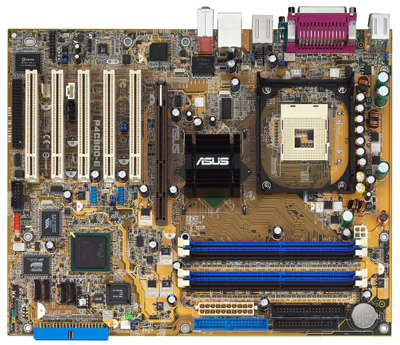
When all is said and done, the P4C800-E Deluxe has proven itself to be the premier Pentium 4 motherboard for overclockers. We have been routinely able to reach into the 270MHz-280MHz FSB range on good, old retail Intel cooling with a good 2.4C processor. However, with a 2.8C processor, the FSB that you're able to reach isn't really too important, while the core clock speed is. However, if you're using a 2.4C processor, the P4C800-E's ability to sustain a 1:1 FSB:memory ratio is significant. Running your memory and FSB in sync at that high a speed will yield tremendous performance. But in the end, the performance hit you take by using high speed memory to match your high speed (overclocked) FSB may not be worth the extra money due to inflated memory timings (read: latencies).
However you cut it, though, the ASUS P4C800-E Deluxe offers everything an overclocker could want: plenty of room for FSB overclocking, 2.85V max VDIMM, 1.95V max Vcore, and features like CSA Gigabit LAN, SATA and IDE RAID, IEEE 1394 FireWire, etc. This motherboard is absolutely packed with just about every feature that a high end user and overclocker could need. The P4C800-E Deluxe is also capable of handling 2.8E processors, based on the 0.09-micron Prescott core. However, as we've mentioned in previous Buyer's Guides, we highly advise against purchasing any "E" revision Pentium 4 processors for now, even though they are 100% compatible with the ASUS P4C800-E Deluxe. The slightly higher prices on some "E" Pentium 4 processors, the slightly slower performance, and their high power consumption are all drawbacks of using a Prescott processor for overclocking.
Listed below is part of our RealTime pricing engine, which lists the lowest prices available on the Intel CPUs and motherboards from many different reputable vendors:
If you cannot find the lowest prices on the products that we've recommended on this page, it's because we don't list some of them in our RealTime pricing engine. Until we do, we suggest that you do an independent search online at the various vendors' web sites. Just pick and choose where you want to buy your products by looking for a vendor located under the "Vendor" heading.
Memory
Recommendation: 2 X 256MB Mushkin PC3500 Level One Dual Pack (CAS2)Price: $145 shipped
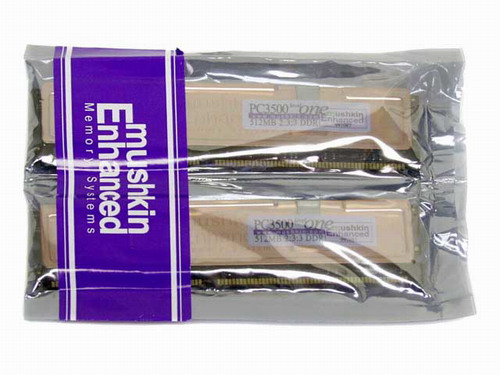
For whatever reason, memory prices have skyrocketed recently. Everything from PC3200 or PC3500 to 1GB, memory modules have gone up significantly in price. By the time you read this, prices may have shifted significantly, so be wary.
While companies like Corsair, OCZ and now Kingston are heavy favorites among high-end memory consumers, Mushkin is also starting to gain favor rapidly. In the last few months, we've been using OCZ's Platinum modules as the standard for a majority of AnandTech's testbeds, but we have also been using Mushkin Level One memory (mostly Level II actually). Unfortunately, it is getting harder and harder to find dual packs nowadays, but Mushkin Level One Dual Packs are available at large vendors, like Axion and Newegg, so they're still out there. We've been able to do lots of testing with these specific PC3500 modules and they indeed run stabily at PC3500 (433MHz DDR) on many currently available motherboards. There are many PC3500 modules that aren't capable of reliable DDR433 speeds on popular motherboards, so be wary. But motherboards such as the ABIT NF7-S Rev. 2 and ASUS P4C800-E will run these modules very well, so we suggest that you take a look at them when purchasing your motherboard. However, don't get confused; PC3500 is not an officially sanctioned JEDEC spec, and therefore there are no motherboards on the market which can claim that they officially support PC3500 speeds. PC3500 is quite easily attainable with modern-day motherboards, but just be aware that PC3200, not PC3500, is the highest speed that your motherboard manufacturer will officially support under warranty.
Alternative: 2 X 512MB OCZ PC3700 GOLD Revision 2 (CAS2.5)
Price: $269 shipped

After developing a reputation based on shoddy business practices, not to mention shoddy memory, OCZ has come roaring back and has gained wide acceptance among enthusiasts and average users alike after many months of wary purchasing and close inspection by hardware web sites like AnandTech. We've raved about OCZ modules in many reviews over the last few months (this one most recently), and have been extremely pleased with the results that we've been getting. OCZ modules have gone from disappointing and unreliable to impressive and dependable in what seems like an overnight transformation. OCZ still has a ways to go to gain acceptance among doubters who have never tried their memory or continue to hold onto conspiracy theories about their link to the OCZ of old, but we aren't placing OCZ's GOLD Rev. 2 PC3700 modules as runner-up based on whim, so take that to heart. The GOLD series is capable of a "low" latency of CAS2.5 at DDR466 speeds (PC3700) and has a huge ceiling for overclockers. If you're not an overclocker, then obviously the GOLD series will not be of much value to you. If you are overclocking, just remember that you take a risk by overclocking your memory, both in terms of voiding warranties and damaging hardware. Beginners need not apply here for overclocking.
Notice that these OCZ modules are 512MB modules and not 256MB modules like the Mushkin ones that we had recommended. If you want cheaper 512MB modules, we suggest that you take a look at Crucial and Kingston brands. Just be aware that, generally, the cheapest 512MB modules are usually the modules that don't overclock that well.
Video
Recommendation: 128MB Gigabyte Radeon 9600 Pro, DVI and TV-outPrice: $135 shipped

Gigabyte makes several excellent ATI Radeon cards nowadays. Their stock coolers are bigger and better than most you'll find, at least compared to PowerColor and Sapphire.
Gigabyte sent us their Radeon 9600 Pro quite some time ago and today, we are finally able to do a little testing on it. Performance is on par with other 9600 Pro video cards that we've tested. In fact, it was one of the fastest of the bunch. Overclocking performance with Gigabyte's 9600 Pro is stellar; we were able to achieve 475MHz core clock and 700MHz memory clock speeds using the stock Gigabyte cooler. These speeds were Prime 95 and SPECviewperf 7.1.1 stable, but as we've said before, that only gives you a narrow idea of how stable your system will be over a period of several months. Still, we didn't experience a single issue during our stability testing at 475MHz/700MHz. Remember, the stock speeds for the 9600 Pro are 400MHz/600MHz, so we're talking about quite a large difference in performance when overclocked to 475MHz/700MHz.
In case you're curious, we set VAGP in the BIOS to 1.6V. This is a perfectly safe voltage, even though 1.5V is the default VAGP for modern day motherboards. Nothing higher than 1.6V is necessary though, as it'll yield diminishing returns to the point where it's basically pointless to overvolt any higher. The 475MHz/700MHz overclock was achieved on both the 2500+ ABIT NF7-S Rev.2 system and the 2.8C ASUS P4C800-E Deluxe system, running at 2.52GHz (1.80V) and 3.59GHz (1.65V) respectively.
Alternative: Sapphire Radeon 9800 Pro with DVI and TV-out
Price: $209

Sapphire also makes one of the better 9800 Pro video cards out there. Speed and features for the price are excellent ($209), and overclocking performance with the stock cooling is impressive. The best combination of core and memory clock speed that we were able to reach was 415MHz core clock and 780MHz memory clock speeds with just the stock cooling. For the few hours that we tested the 9800 Pro with Prime 95 and SPECviewperf 7.1.1, we were unable to see any IQ issues and didn't discover any instability. Overall, a fantastic performer for the money.
If you feel the need to squeeze out more performance from your video card, we suggest that you replace your stock cooling solution (whether it's the 9600 Pro or 9800 Pro) with an Artic Cooling VGA Silencer. They can be had for $26 shipped online.
Listed below is part of our RealTime pricing engine, which lists the lowest prices available on ATI video cards from many different reputable vendors:
If you cannot find the lowest prices on the products that we've recommended on this page, it's because we don't list some of them in our RealTime pricing engine. Until we do, we suggest that you do an independent search online at the various vendors' web sites. Just pick and choose where you want to buy your products by looking for a vendor located under the "Vendor" heading.
Monitor
Recommendation: Samsung 955DF (19") DynaFlat CRTPrice: $200 shipped
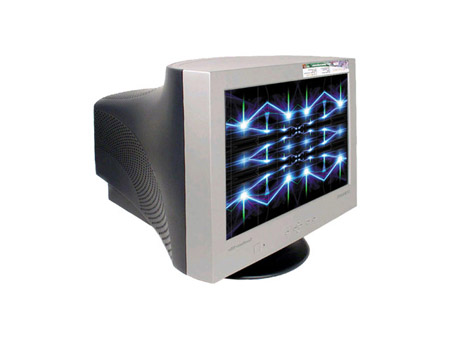
To this day, the 955DF is still one of the best bang-for-the-buck 19" monitors on the market. The .20mm dot pitch, max resolution of 1600x1200 @ 68Hz, and well known reliability, usability, low price and picture quality of this monitor are all reasons why we highly suggest taking a look at it. We've had extensive experience with this monitor, having done a review of it back in April 2002. We are still impressed with this monitor and will still confidently recommend it. As you may have guessed by now, CRT technology (especially in the bang-for-your-buck price range) hasn't moved much in quite some time, but that is the norm in this industry. So, don't be surprised if we continue to recommend this monitor for mid-range Buyer's Guides for some time. Of course, you shouldn't be surprised to see it here either, since overclockers usually demand good 19" CRTs for gaming.
Monitor Alternative: NEC Diamondtron 19" CRT (model FE991SB)
Price: $257 shipped
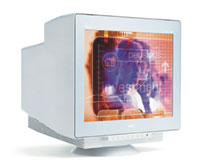
While costing significantly more money than a 955DF, Diamondtron monitors have gained popularity as some of the best CRTs on the market. This specific model has a 1792x1344 @ 68Hz, which is slightly better than the 955DF. Overall, having closely judged both monitors, we'd have to say that the Diamondtron's picture clarity/sharpness is better than the 955DF. Gaming performance isn't much different at resolutions like 1600x1200, so there's no discernable difference there. However, if you want one of best of the 19" monitors out there, you certainly can't go wrong with this Diamondtron model.
Computer Case
Recommendation: Kingwin K11 Aluminum ATX casePrice: $70 shipped
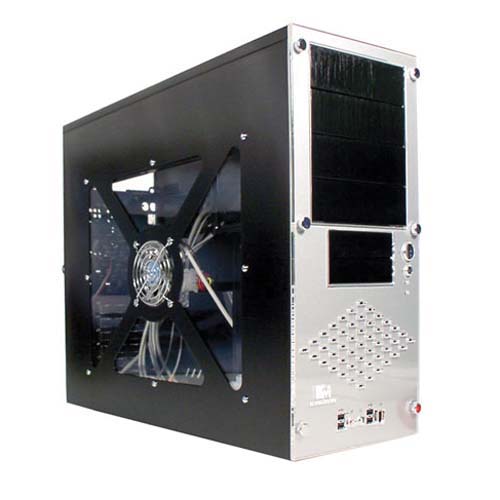
We've recommended the Kingwin K11 before as an alternative and as our primary recommendation, and we continue that feeling this week with our overclocking system. Ventilation is very important for an overclocking system and the K11 is able to deliver with four different fan positions specifically located so that as much hot air as possible is blown out of your system. Even with all your components installed, the case is still relatively light, even light enough to carry to a LAN party or to bring over to your friend's or family's house, mostly because of its aluminum construction. It comes with four 5.25" Bays, two external 3.5" Bays and five internal 3.5" bays, four USB 2.0 ports, and one Audio, Mic, FireWire port. As we mentioned before, there are four different fans, located at the top, at the rear, and two front fans as well. The case construction and quality is quite good; the material isn't cheap or flimsy by any means. You also don't run the risk of cutting yourself on sharp edges while building your system, as pretty much every corner of this case is dull to the touch because of its aluminum (and not pure stainless steel) construction.
A power supply that is able to generate consistent, stable voltages is vital to the success of an overclocking system. Quality is of the utmost importance in this particular area, and because of that, we would have to suggest the highly touted Antec True Power 430W (TRUE430) power supply. This power supply was used for each of our overclocking tests in this guide and is the perfect power supply for serious overclockers. It provides stable voltages on all rails and has an excellent reputation for longevity. We've personally built several overclocking systems around it with great success. If you're looking for a more affordable variant, we suggest the 400W version of this Antec PSU for $55 shipped online.
A little buying advice - search your local PC Club or go online (www.pcclub.com) if you're having difficulty finding the Kingwin K11 Aluminum for $70 shipped.
If you cannot find the lowest prices on the products that we've recommended on this page, it's because we don't list some of them in our RealTime pricing engine. Until we do, we suggest that you do an independent search online at the various vendors' web sites. Just pick and choose where you want to buy your products by looking for a vendor located under the "Vendor" heading.
Sound Card
Recommendation: Creative Labs Sound Blaster Audigy 2 (6.1) OEMPrice: $70 shipped
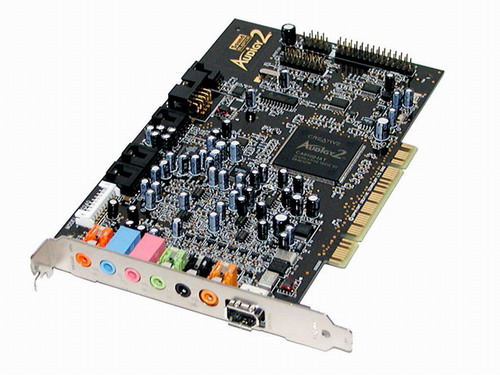
If you're a big gamer, love watching movies, or are just someone who wants quality sound, the Audigy 2 is one of the best add-in sound cards on the market to fit those needs. This version of the Audigy 2 supports 6 channels of sound and will deliver a great listening experience in any game, and especially ones that support the Audigy 2's special features like EAX. Simply pair the Audigy 2 with the right set of speakers and you'll have the necessary tools for an exceptional listening experience. Other special Audigy 2 features include 24/96 analog playback and recording and "add-ons" like FireWire.
As we've said before, there are inevitably going to be people who don't need this kind of audio processing power. So as our alternative, we suggest those users simply use their motherboard's onboard sound controller, in this case from either the ABIT NF7-S Rev.2 or ASUS P4C800-E Deluxe. Some overclockers could care less about their system's sound as long as there isn't any interference or crackling, even if they're gamers. If that fits your audio needs to a "T", then use the onboard sound controller. However, with the right surround sound speaker system and an Audigy 2 like the one recommended above, you should know that you're missing out on an immersive and enjoyable experience, at least in our opinion.
Speakers
Recommendation: Logitech Z-640 5.1 speakersPrice: $55 shipped
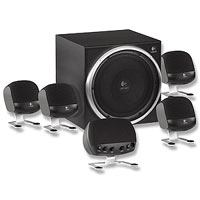
It's hard not to recommend such an incredibly great set of 5.1 speakers like the Z-640 series from Logitech. Whether you talk about the 45.5W satellite output/25.7W subwoofer output or the very effective magnetic shielding that protects your speakers from interference from other devices, you can't help but love these speakers. They have a great reputation for reliability and longevity in general, and our extensive personal use of these speakers only backs up that claim. If you want surround sound on the cheap, it's hard to beat the Z-640. If you're big into gaming, we suggest an add-in sound card like the Sound Blaster Live! 5.1 that we recommended before, or better yet, the Audigy for positional audio, if you can afford to spend the money. Personally, we find the immersive gaming experience of the Z-640s and an Audigy to be truly great, but others may not be so impressed and will opt for the cheaper variant.
Alternative: Logitech Z-5300 THX Certified 5.1 speaker
Price: $147 shipped

The Z-5300 is, more or less, the more powerful version of Logitech's more successful brother, the Z-640. Besides obviously supporting 5.1 channels of sound, the Z-5300 is able to boost such features as a 100W subwoofer and a greater than 85 dB signal to noise ratio. The surround sound gaming and movie experience is tremendous, paired with a good Audigy 2 sound card; these speakers can get impressively loud and best of all, we didn't encounter any sort of crackling or distortion as volume was turned up to excruciating levels. For the price, these speakers are almost as unbeatable as the Z-640's, though not quite considering there still is about an $80 price delta in favor of the Z-640.
If, for whatever reason, you're not interested in high-end sound and will be gaming or watching movies mostly with your headphones on, obviously an expensive surround sound system will be pretty useless. If that's the case, you may just want to opt for 2.0 or 2.1 speakers, such as the ones recommended in our Budget Guide. However, if you have to choose between a good sound card and a good speaker system, we suggest that you go with the speaker system.
If you cannot find the lowest prices on the products that we've recommended on this page, it's because we don't list some of them in our RealTime pricing engine. Until we do, we suggest that you do an independent search online at the various vendors' web sites. Just pick and choose where you want to buy your products by looking for a vendor located under the "Vendor" heading.
Networking
Whichever motherboard you choose, we suggest that you utilize your onboard Ethernet controller for Internet. Both the ABIT NF7-S Rev.2 and ASUS P4C800-E Deluxe come with an onboard Ethernet controller. In the ABIT NF7-S Rev.2's case, it is an onboard Realtek RTL8201BL controller, which is a very cheap and simple 10/100 solution. In the case of the ASUS P4C800-E Deluxe, however, ASUS outfits a very nice PRO1000 controller, utilizing Intel's CSA (Communications Streaming Architecture), which in this case, takes your Gigabit Ethernet off the PCI bus and places it on separate bus for higher data transfer speeds. You're not going to notice much difference unless you transfer large amounts of data in your home network frequently, but it's there if you need it.Storage
Recommendation: Western Digital 800JB 80GB 7200RPM (8MB cache) ATAPrice: $72 shipped
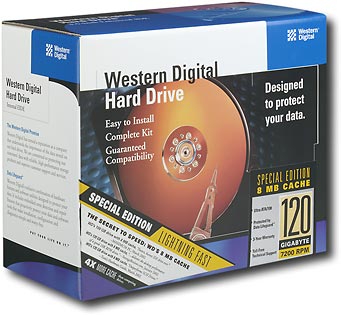
If you're a performance-crazed overclocker, you probably are going to need a lot of space for your data. If you play a lot of games, watch movies, listen to MP3's and do all that good stuff, then you're going to need a well-sized hard drive. Western Digital's 800JB (and 1200JB) are the best desktop ATA drives on the market with the necessary storage capacity for your needs. We've standardized our testbed systems on Seagate SATA 120GB Barracuda drives and WD Raptor over the last few months, but had been using WD 800JB and 1200JB HDD's for months prior to that. They were reliable and we haven't had one fail on us yet. And we know about HDD failure, as AnandTech employees (and basically half the population) fell victim to the IBM 75GXP disaster of yore. WD's Caviar 8MB drives, in the form of their 40GB, 80GB, 120GB, etc. HDD's, are nothing like the IBM disasters from long ago. Unfortunately, you may or may not have to deal with a rather loud whining noise that has been infamous in a lot of WD's Caviar HDD's. We've only experienced the loud whining with 120GB (1200JB) HDD's, while 40GB and 80GB Caviars operate significantly more silently (800JB in particular). However, we only have about 7 or 8 samples of these drives from which to test, while enthusiasts have thousands upon thousands. If noise is a big consideration in a purchase, the safe bet is the Seagate Barracuda series.
Alternative: Western Digital Raptor 74GB 10,000RPM SATA
Price: $227 shipped
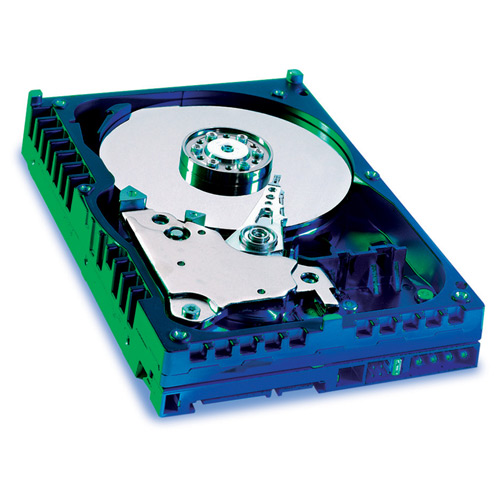
The 74GB Raptor is the faster version of WD's 36.7GB Raptor, outfitted with the same 8MB buffer and 10,000RPM spindle that we looked at about a year ago here. Besides the difference in performance, this Raptor still has the same 5-year warranty and outputs just about the same amount of noise. Previously, 10,000RPM speeds or a 5-year warranty were features only found on enterprise/SCSI drives, but thanks to WD, they have finally reached the mainstream desktop, more or less. The only "problem" with Raptor drives is that they don't store a lot of data, with only 36.7GB and 74GB versions of the Raptor currently available. If you can't live with a 36.7GB or 74GB drive, then we suggest that you skip this alternative and stick with the recommended 1200JB. But that's only if storage capacity is very important to you.
Optical Storage
Recommendation: Lite-On 52x32x52x16 Combo CD-RW/DVD-ROM drivePrice: $52 shipped

If you want to be able to watch DVDs, you can always opt for a combo drive. Its function essentially integrates CD burning and DVD watching into one drive. The added benefit is that you're getting a better price for this combo drive versus purchasing an additional drive. The price difference isn't all that huge ($10-$15) if you were to buy a separate drive, plus that second drive allows you to watch DVDs while your burn CDs, which isn't possible with this combo drive. In the end, the decision is up to you as to how you want to configure optical storage.
Alternative: NEC 2500A 8X DVD+/-RW
Price: $87 shipped
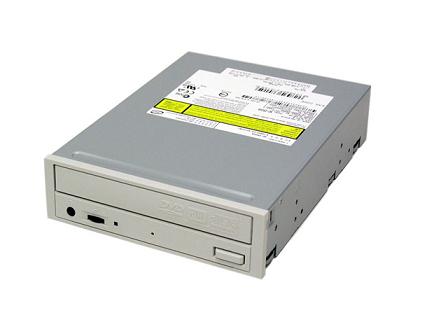
One of the best "bargain" DVD burners currently available is, without a doubt, NEC's 2500A. NEC's 2500A is probably one of the best bang-for-the-buck high end DVD burners that you'll find on the market today, without spending over $100. It's able to play and burn just about every DVD/CD out there, and up to 8X DVD+/-RW to boot. You won't be seeing higher end DVD burners for quite some time (read: mid-summer), so this drive will last you many, many months.
Listed below is part of our RealTime pricing engine, which lists the lowest prices available on storage from many different reputable vendors:
If you cannot find the lowest prices on the products that we've recommended on this page, it's because we don't list some of them in our RealTime pricing engine. Until we do, we suggest that you do an independent search online at the various vendors' web sites. Just pick and choose where you want to buy your products by looking for a vendor located under the "Vendor" heading.
Keyboard and Mouse
While trivial, it's still important that you purchase the right keyboard and mouse. Different people have different preferences for a keyboard's feel and look, and the same goes for a mouse. Therefore, we suggest that you personally try out a keyboard and mouse for yourself. Recommending purchasing these items online is misleading, as there are too many users with different preferences for this type of thing. Visit your nearest PC outlet to try out a keyboard and mouse yourself; a PC Club, Best Buy, CompUSA, or Circuit City store will do. We suggest that you start with Microsoft and Logitech keyboards and mice. Make sure you also check out optical mice from Microsoft and Logitech as well. A good solid optical mouse from either manufacturer should run about $20, but in some cases, can run as little as $10 if you can find the right deal.There are also some great wireless optical mice out there, like the MX700 for example, but it really depends on whether you care at all about a wireless mouse and are willing to spend the money to acquire it. Most will be satisfied with a standard optical mouse from Microsoft or Logitech for gaming, as it offers identical (or better) precision and feel than most wireless mice. We are bringing up the idea of wireless mice merely because it is hugely popular with gamers nowadays. Otherwise, stick with what makes you comfortable.
Cooling
Recommendation: Thermalright SLK-947U Copper HeatsinkPrice: $42 shipped

Thermalright is extremely popular with overclockers and enthusiasts in general for their high end HSFs (Heatsink and Fans). The SLK-947U is one of the best HSFs on the market for either Athlon XP or Pentium 4 systems. Its copper construction and soldered fin design are features that allow it to cool very high core clock speeds effectively. Remember, the whole point of getting a high end HSF is so that you can dissipate as much heat as possible from your CPU; otherwise, you end up overheating/damaging your CPU.
Anyway, we took some readings from our SLK-947U with an Athlon XP at 2.52GHz (1.80V) and a Pentium 4 at 3.59GHz (1.65V). Under load, the Athlon XP routinely hit around 52C, while the Pentium 4 hit around 48C. Granted, the ABIT NF7-S Rev.2 routinely outputs high readings (as do most ABIT boards), so under load, the Athlon XP was probably a little cooler than 52C. Still, these temperatures are just fine. Make sure you monitor your ambient temperatures closely and consistently as well. Usually, you need to worry when you start going over 60C, especially if your Athlon XP is running at 1.80V and your Pentium 4 is running at 1.65V. If you want your Pentium 4 and Athlon XP to run at a slightly more conservative overclock like 3.4GHz and 2.4GHz, respectively, your best bet is to turn down your voltage (0.05V-0.10V of your CPU), which will in turn lower your core clock speed overclock to around those 3.4GHz and 2.4GHz levels. Though, with this HSF, you should routinely be reaching no worse than 55C MAX, and most of the time well under 50C.
You also have the option of purchasing Artic Silver 5, a thermal compound that essentially makes your SLK-947U dissipate heat more effectively. It's not 100% necessary, but is useful for slightly better temperatures.
Alternative: Thermalright SP-97 Copper Heatsink with Heatpipe Technology
Price: $54 shipped
The SP-97 is widely considered the best HSF on the market, and pretty much the best cooling that you can buy, short of taking the plunge into water cooling. The SP-97 is, more or less, identical to the SLK-947U, save for the addition of 3 heatpipes for better heat dissipation. Unfortunately, we couldn't get an SP-97 in time for this guide, but it's supposed to make about a 4-5C difference. You'll need a fan for both the SLK-947U and SP-97, so make sure you go out and buy one, preferably a 92mm fan. We suggest the Vantec Tornado, which costs just $13 shipped. At these high clock speeds, you're not going to experience a low noise environment with your fan - it'll need to run over 3000RPM. However, as we said before, if you want to be a little more conservative with your overclock for the sake of noise, you can lower your Vcore, which lowers your clock speed, to around 1.75-1.80V for your Athlon XP and 1.60V-1.65V for your Pentium 4. This allows you to lower your fan's RPM to more reasonable levels while still maintaining a great overclock at low temperatures.
If you cannot find the lowest prices on the products that we've recommended on this page, it's because we don't list some of them in our RealTime pricing engine. Until we do, we suggest that you do an independent search online at the various vendors' web sites. Just pick and choose where you want to buy your products by looking for a vendor located under the "Vendor" heading.
Overclocking System Summary
| Hardware | Component | Price |
| CPU & Cooling | AMD Athlon XP 2500+ Mobile (OEM) plus SLK-947U HSF & Vantec Fan | $134 |
| Motherboard | ABIT NF7-S Rev.2 (nForce2 Ultra 400) | $98 |
| Memory | 2 X 256MB Mushkin Level One PC3500 (DDR433) | $145 |
| Video Card | 128MB Gigabyte Radeon 9600 Pro | $135 |
| Monitor | Samsung 955DF DynaFlat CRT | $200 |
| Computer Case | Kingwin K11 Aluminum ATX plus $72 430W Antec PSU | $142 |
| Sound Card | Creative Labs Audigy 2 6.1 (OEM). Or free onboard sound. | $70 |
| Speakers | Logitech Z-640 5.1 surround | $55 |
| Networking | Onboard 10/100 Ethernet or 10/100/1000 Gigabit controller | $0 |
| Hard Drive | Western Digital 800JB (80GB) | $72 |
| CD-RW | Lite-On 52x32x52x16 Combo CD-RW/DVD-ROM | $52 |
| Bottom Line | - | $1103 |
$1103 is the final price of our high end system this week, not including any money that you'll spend on software (Windows XP Home or Professional, Office, etc.) or a keyboard and mouse.
Long-time overclockers are absolutely going to love a setup like this. They'll have quality DDR that they can use for many months, if not years, to come, and will enjoy great performance and stability at the same time. Beginning overclockers should consult our forums for more information on how to overclock, as it can be dangerous for inexperienced users. What we've talked about in this guide may be difficult to understand if you don't have some type of background in modern day overclocking, making AnandTech's forums (or any good online hardware forum, really) the best place for you to ask for building advice.
Now go build your system and let us know what you think in our comments section.







